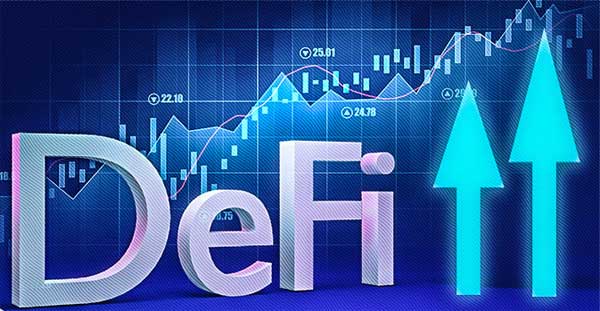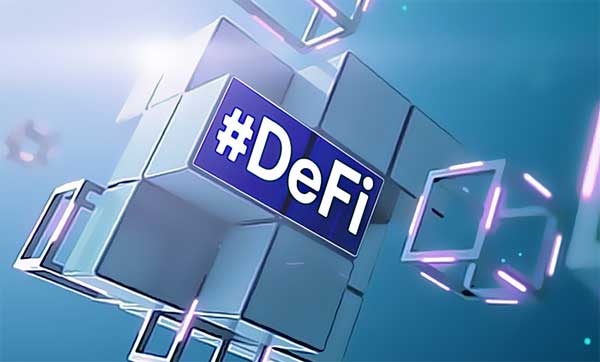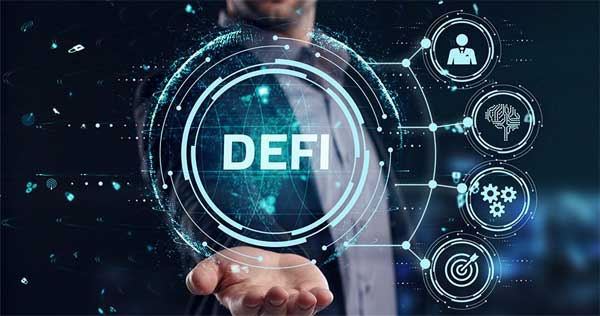The world of finance is witnessing a revolution, and the vanguard of this movement is Decentralized Finance, commonly known as DeFi. This nascent ecosystem is reprogramming the traditional financial system by leveraging blockchain technology to remove intermediaries and create a more open, accessible, and transparent financial landscape. DeFi is not just an alternative; it’s a gateway to a slew of new investment opportunities. From peer-to-peer lending to complex financial instruments, DeFi is paving the way for a financial democracy where anyone with an internet connection can participate. This article delves into how DeFi is redefining finance, its burgeoning investment landscape, the risks and rewards, and what the future holds for DeFi markets.
DeFi: Redefining Finance

Decentralized Finance (DeFi) has been touted as the most significant innovation in the financial sector since the advent of digital banking. By virtue of blockchain technology, specifically using smart contracts on platforms like Ethereum, DeFi eliminates the need for traditional financial intermediaries such as banks, brokers, and exchanges. This disintermediation allows for a direct and seamless interaction between parties, offering greater efficiency and reduced costs. DeFi protocols are permissionless, meaning they are open for anyone to participate, regardless of geographical location or economic status, which could potentially democratize access to financial services. Moreover, by running on decentralized networks, DeFi platforms offer a level of transparency seldom seen in conventional finance. Transactions are recorded on a public ledger, ensuring that anyone can audit and verify the integrity of financial activities. The composability of DeFi protocols—often referred to as “money legos”—enables the creation of complex financial services by combining different DeFi products, further enhancing innovation in the space.
Navigating the DeFi Landscape

Navigating through the DeFi landscape can be both exhilarating and daunting, given the plethora and complexity of available platforms. The ecosystem can be broken down into several core components:
- Lending and Borrowing: Platforms like Aave and Compound allow users to lend out their cryptocurrencies and earn interest or borrow against their digital assets.
- Decentralized Exchanges (DEXs): Uniswap and Sushiswap are DEXs where users can swap various tokens without the need for a central authority.
- Yield Farming and Liquidity Mining: Users can stake or lend their tokens in return for rewards, often in the platform’s native token.
- Synthetic Assets: Platforms like Synthetix permit the creation of digital versions of real-world assets like stocks and commodities.
- Insurance: Protocols such as Nexus Mutual offer decentralized insurance against smart contract risks.
As the DeFi ecosystem matures, it is becoming increasingly user-friendly with emerging aggregators and dashboards that help investors track their investments and risks in a consolidated view.
The Rise of DeFi Investments

The DeFi sector has experienced explosive growth in both user adoption and value locked in smart contracts. This upsurge is driven by the compelling offerings DeFi promises:
- High Yield Opportunities: DeFi platforms often offer significantly higher interest rates compared to traditional savings accounts.
- Accessibility: With just a smartphone and an internet connection, anyone can access DeFi services.
- Tokenization: Through DeFi, a variety of assets can be tokenized, making them more divisible and liquid.
- Financial Inclusivity: DeFi has the potential to include the unbanked population by providing access to a global financial system.
- Governance: Many DeFi platforms have governance tokens which give users a say in the direction and development of the protocol.
Investors are flocking to DeFi not just for speculative purposes but also to take part in the construction of a new financial paradigm.
DeFi’s Innovative Protocols

The DeFi space is abundant with innovative protocols that challenge traditional financial models:
- MakerDAO: A decentralized credit platform that supports the creation of DAI, a stablecoin pegged to the US dollar, through a system of collateralized debt positions (CDPs).
- Yearn.finance: Aims to optimize yield farming strategies across various DeFi platforms automatically.
- Avalanche: A high-throughput blockchain platform that aims to achieve scalability without compromising decentralization.
- Curve Finance: Focuses on stablecoin trading and aims to provide low slippage and low fee transactions.
- Balancer: An automated market maker that allows users to create or add liquidity to customizable pools and earn trading fees.
These protocols exemplify the innovative spirit of DeFi, providing users with a range of financial services that are programmable, interoperable, and highly customizable.
Risk and Reward in DeFi

As with any emerging financial frontier, DeFi comes with its set of risks and rewards:
- Rewards: The potential for high returns, the novelty of being an early adopter, and the opportunity to be part of a community-driven financial system.
- Risks: Smart contract vulnerabilities, regulatory uncertainty, and the volatile nature of cryptocurrencies.
Investors in DeFi need to be well-versed in the technology and the specific protocols they engage with. Conducting thorough research and applying risk mitigation strategies, such as diversification and insurance, can help navigate the uncertainties of this nascent space.
The Future of DeFi Markets

The future of DeFi markets seems poised for continued growth and innovation. As regulatory frameworks evolve and technology matures, DeFi could integrate more deeply with traditional finance. The development of Layer 2 solutions and the emergence of interoperability protocols promise to enhance scalability and user experience, potentially leading to greater adoption. Additionally, as institutional interest grows, DeFi could see an influx of capital and mainstream acceptance. While it’s impossible to predict the exact trajectory of DeFi, its principles of openness, inclusivity, and flexibility will likely continue to attract a diverse range of participants, reshaping the financial landscape as we know it.
Comparison of Traditional Finance and DeFi
| Feature | Traditional Finance | Decentralized Finance (DeFi) |
|---|---|---|
| Intermediaries | Required (banks, brokers) | Not required |
| Access | Limited by geography | Global |
| Transparency | Limited | High (public ledger) |
| Innovation Speed | Slower (regulations) | Faster (open source) |
| User Control | Less (custodial services) | More (self-custody) |
| Potential Returns | Generally lower | Potentially higher |
In conclusion, Decentralized Finance is not just another industry buzzword; it’s a transformative force that’s redefining the very fabric of the financial sector. With its promise of democratizing finance, enhancing transparency, and fostering innovation, DeFi is a compelling gateway for new and seasoned investors alike. As we navigate this promising yet challenging landscape, it is essential to balance the captivating rewards with the inherent risks. DeFi’s potential to empower individuals and reshape global finance is substantial, but the journey is likely to be punctuated with both disruption and opportunity. The road ahead for DeFi markets is filled with the promise of a more inclusive financial system, and the world is watching with eager anticipation.


